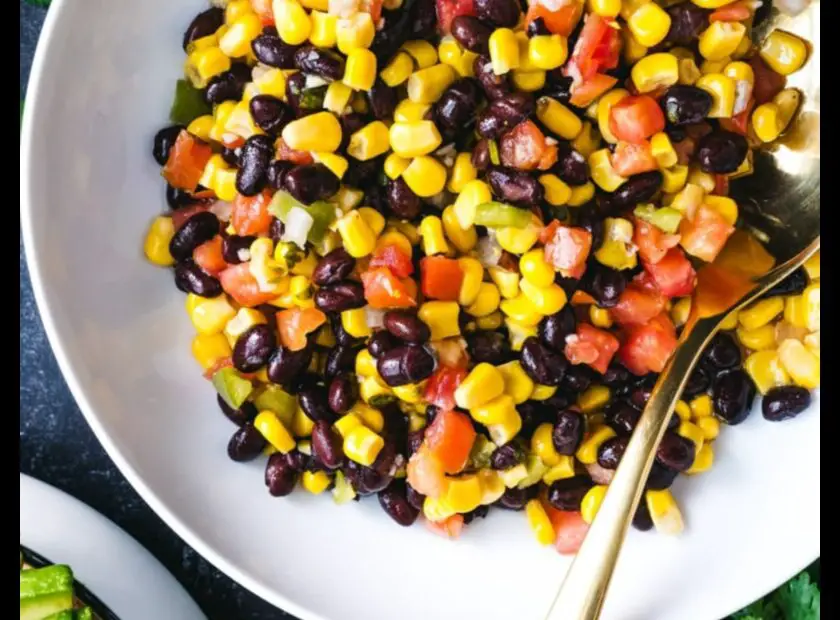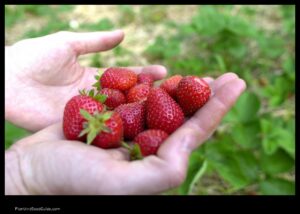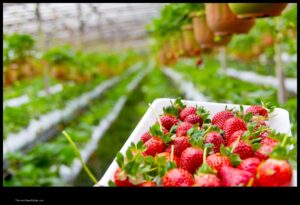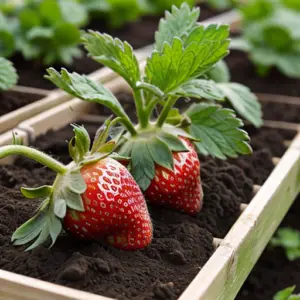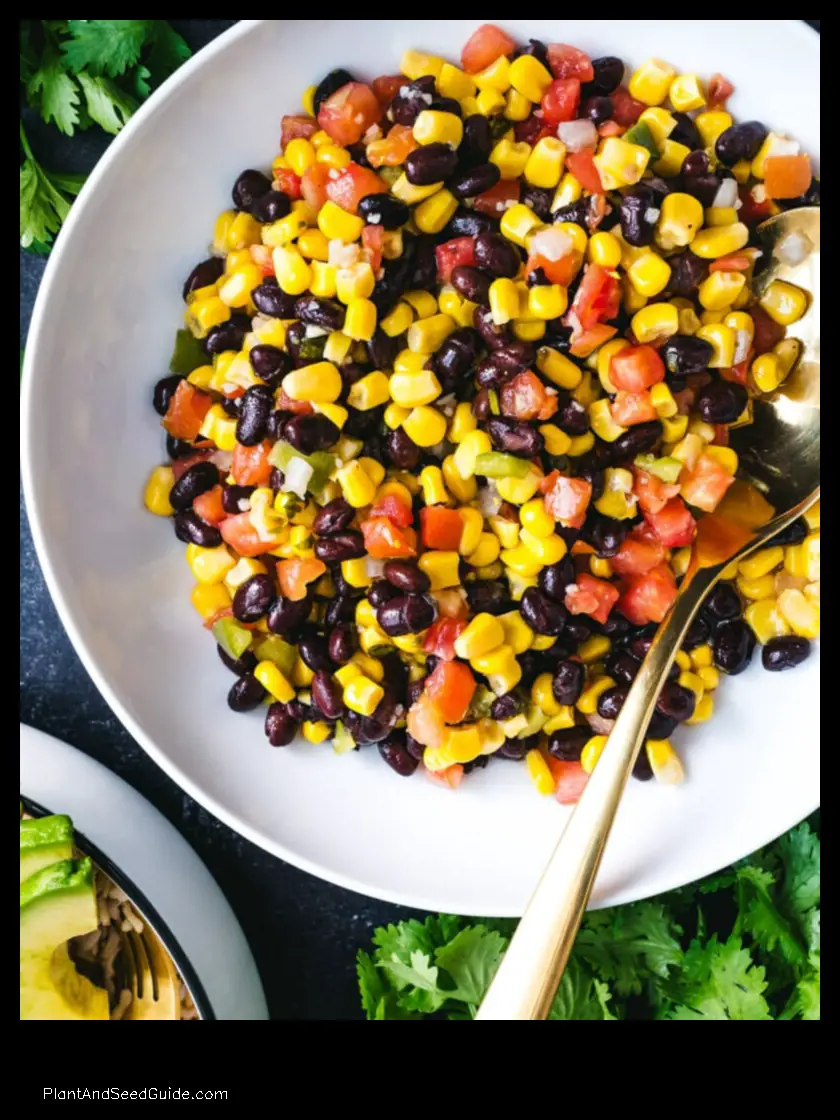
</p>
Why is it a good idea to plant beans between rows of corn?
Intercropping corn and beans is a cropping system that has been shown to have a number of benefits, including:
- Increased yields of both corn and beans
- Improved soil health
- Reduced pest and disease pressure
- Increased nitrogen fixation
In this article, we will discuss the benefits of intercropping corn and beans in more detail, and provide instructions on how to implement this cropping system in your own garden or farm.

Benefits of Intercropping Corn and Beans
Intercropping corn and beans can provide a number of benefits for both crops, including:
- Increased yields: Intercropping corn and beans can help to increase yields of both crops. This is because the two crops can complement each other, using different resources and providing different benefits to each other. For example, corn is a tall crop that provides shade for beans, which helps to protect them from the sun and reduces water loss. Beans, on the other hand, fix nitrogen from the air, which can be used by corn to improve its growth.
- Improved soil health: Intercropping corn and beans can help to improve soil health. This is because the two crops can help to break up the soil, improve drainage, and increase the amount of organic matter in the soil.
- Reduced pest and disease pressure: Intercropping corn and beans can help to reduce pest and disease pressure.
For example, corn can attract pests such as corn earworms, which helps to keep them from damaging beans. Beans, on the other hand, can attract pests such as aphids, which helps to keep them from damaging corn.This is because the two crops can attract different pests and diseases, which helps to keep them from becoming a problem for either crop..
- Increased nitrogen fixation: Beans are able to fix nitrogen from the air, which can be used by other crops in the rotation. This can help to reduce the need for nitrogen fertilizer, which can save money and be better for the environment.
How to Intercrop Corn and Beans
Intercropping corn and beans is a relatively simple process, but there are a few things you need to keep in mind in order to get the best results.
- Choose the right varieties of corn and beans.
- Plant the crops at the correct time.
- Space the crops correctly.
- Manage pests and diseases.
For more detailed instructions on how to intercrop corn and beans, you can refer to the following resources:
- Intercropping from the University of Minnesota Extension
- Intercropping from the USDA Forest Service
- Intercropping from the USDA Natural Resources Conservation Service
Types of Intercropping Systems
There are a number of different ways to intercrop corn and beans. The most common system is to plant corn and beans in alternating rows. This system is relatively simple to implement and can be used on a variety of scales. Another option is to plant corn and beans in a mixed stand. This system can be more complex to manage, but it can also provide
| Feature | Corn | Beans |
|---|---|---|
| Yield | High | Medium |
| Nitrogen Fixation | Low | High |
| Soil Health | Good | Excellent |
| Water Use Efficiency | Good | Excellent |

IBenefits of Intercropping Corn and Beans
Intercropping corn and beans has a number of benefits, including:
- Increased yield
- Improved soil health
- Reduced pest and disease pressure
- Increased nitrogen fixation
Let’s take a closer look at each of these benefits.
Increased yield
Intercropping corn and beans can increase yield by as much as 20%. This is because the two crops complement each other’s growth requirements. Corn is a tall, fast-growing crop that requires a lot of sunlight. Beans are a shorter, slower-growing crop that can tolerate shade. By intercropping corn and beans, the corn can provide shade for the beans, which helps the beans to grow better.
Improved soil health
Intercropping corn and beans can improve soil health by reducing erosion and increasing organic matter content.
Beans also fix nitrogen from the air, which helps to improve soil fertility.Corn and beans have different root systems, which help to break up the soil and improve drainage..
Reduced pest and disease pressure
Intercropping corn and beans can help to reduce pest and disease pressure by providing a physical barrier between the two crops. Corn is a tall crop that can help to shade out weeds and pests. Beans are a nitrogen-fixing crop that can help to suppress soil-borne diseases.
Increased nitrogen fixation
Beans are a nitrogen-fixing crop, which means that they can convert atmospheric nitrogen into a form that plants can use. This can help to reduce the need for nitrogen fertilizer, which can save farmers money.
Overall, intercropping corn and beans has a number of benefits, including increased yield, improved soil health, reduced pest and disease pressure, and increased nitrogen fixation.
Benefits of Intercropping Corn and Beans
Intercropping corn and beans has a number of benefits, including:
- Increased crop yields
- Improved soil health
- Reduced pest and disease pressure
- Enhanced nutrient cycling
- Increased biodiversity
Let’s take a closer look at each of these benefits.
Increased crop yields
Intercropping corn and beans can increase crop yields by up to 30%. This is because the two crops complement each other’s growth requirements. Corn is a tall, upright plant that requires a lot of sunlight. Beans are a shorter, vining plant that can grow in the shade of the corn. This allows the two crops to share resources more efficiently, resulting in higher yields.
Improved soil health
Intercropping corn and beans can improve soil health by increasing the amount of organic matter and nutrients in the soil.
This helps to improve soil fertility and can reduce the need for fertilizer.Beans are nitrogen-fixing plants, which means they can convert atmospheric nitrogen into a form that can be used by other plants..
Reduced pest and disease pressure
Intercropping corn and beans can help to reduce pest and disease pressure. Beans can help to repel pests, such as aphids and corn borers, from corn. Corn can also help to protect beans from diseases, such as rust and powdery mildew.
Enhanced nutrient cycling
Intercropping corn and beans can help to enhance nutrient cycling in the soil. Beans can fix nitrogen from the air, which can be used by corn and other crops. Corn can provide shade and shelter for beans, which can help to reduce evaporation and improve water retention.
Increased biodiversity
Intercropping corn and beans can help to increase biodiversity in the agricultural landscape. By providing a variety of habitats for different plants and animals, intercropping can help to support a healthy ecosystem.
Overall, intercropping corn and beans has a number of benefits, including increased crop yields, improved soil health, reduced pest and disease pressure, enhanced nutrient cycling, and increased biodiversity.
Benefits of Intercropping Corn and Beans
Intercropping corn and beans can provide a number of benefits for farmers, including:
- Increased yields
- Improved soil health
- Reduced pest and disease pressure
- Increased nitrogen fixation
- Diversification of income
Let’s take a closer look at each of these benefits.
Increased yields
Intercropping corn and beans can increase yields by as much as 20%.
Corn is a tall, fast-growing crop that requires a lot of sunlight and nutrients. Beans are a short, slow-growing crop that can fix nitrogen from the air. By intercropping corn and beans, farmers can take advantage of the different growth requirements of the two crops to maximize yields.This is because the two crops complement each other’s growth requirements..
Improved soil health
Intercropping corn and beans can improve soil health by increasing the amount of organic matter and nutrients in the soil. Beans are a legume, which means they can fix nitrogen from the air. This nitrogen is then released into the soil, where it can be used by other plants. Corn also helps to improve soil health by providing a deep root system that helps to break up compacted soil and improve drainage.
Reduced pest and disease pressure
Intercropping corn and beans can help to reduce pest and disease pressure. Beans can help to repel pests such as aphids and corn borers, while corn can help to provide a barrier against diseases such as corn smut. By intercropping corn and beans, farmers can reduce the need for pesticides and fungicides, which can save them money and protect the environment.
Increased nitrogen fixation
Beans are able to fix nitrogen from the air, which is a valuable nutrient for plants.
This can help to reduce the need for fertilizer, which can save farmers money and protect the environment.By intercropping corn and beans, farmers can increase the amount of nitrogen available to their crops..
Diversification of income
Intercropping corn and beans can help to diversify farmers’ incomes. Corn is a staple crop that is used to produce a variety of products, including cornmeal, corn syrup, and ethanol. Beans are also a versatile crop that can be used to produce a variety of products, including beans, bean sprouts, and tofu. By intercropping corn and beans, farmers can reduce their risk of crop failure and ensure that they have a steady source of income.
Overall, intercropping corn and beans can provide a number of benefits for farmers, including increased yields, improved soil health, reduced pest and disease pressure, increased nitrogen fixation, and diversification of income. If you are considering intercropping corn and beans, be sure to do your research to learn more about the specific benefits and challenges associated with this practice.
Common Intercropped Crops
Some of the most common intercropped crops with corn and beans include:
- Squash
- Cucumber
- Pumpkin
- Watermelon
- Sunflower
- Peas
- Alfalfa
- Buckwheat
- Millet
These crops can be intercropped in a variety of ways, depending on the specific needs of the farmer and the climate. For example, squash and cucumbers can be planted between rows of corn, while watermelons and pumpkins can be planted in the same row as corn. Sunflowers and alfalfa can also be intercropped with corn, but they are typically planted in separate rows.
Intercropping corn and beans with other crops can provide a number of benefits, including:
- Increased yields
- Improved soil health
- Reduced pest and disease pressure
- Enhanced biodiversity
If you are interested in intercropping corn and beans with other crops, be sure to do your research to find the best combinations for your specific needs.
VPotential Problems with Intercropping
Intercropping can have some potential problems, including:
Competition for resources. Corn and beans are both competing for the same resources, such as water, nutrients, and sunlight. This can lead to reduced yields of both crops.
Disease transmission. Intercropping can increase the risk of disease transmission between crops. For example, corn and beans are both susceptible to the same diseases, such as corn smut and bean rust.
Weed management. Intercropping can make it more difficult to control weeds. Weeds can compete with crops for resources, and they can also harbor pests and diseases.
Insect management. Intercropping can attract pests to crops. For example, corn and beans can attract corn earworms and bean beetles.
Harvesting difficulties. Intercropping can make it more difficult to harvest crops. For example, it can be difficult to separate corn and beans when they are harvested together.
Benefits of Intercropping Corn and Beans
Intercropping corn and beans has a number of benefits, including:
- Increased crop yields
- Improved soil health
- Reduced pest and disease pressure
- Enhanced nutrient cycling
- Increased biodiversity
Let’s take a closer look at each of these benefits.
Increased crop yields
Intercropping corn and beans can increase crop yields by as much as 20%. This is because the two crops complement each other’s growth. Corn provides a tall stalk for beans to climb, while beans fix nitrogen in the soil, which benefits the corn.
Improved soil health
Intercropping corn and beans can improve soil health by increasing organic matter content, improving water infiltration, and reducing erosion. Corn and beans also help to suppress weeds and pests, which can further improve soil health.
Reduced pest and disease pressure
Intercropping corn and beans can help to reduce pest and disease pressure by providing a physical barrier between the two crops. Beans can also help to suppress pests and diseases that attack corn, and vice versa.
Enhanced nutrient cycling
Intercropping corn and beans can help to enhance nutrient cycling by providing a continuous supply of nutrients to the soil. Corn and beans take up different nutrients from the soil, so they can help to ensure that all of the nutrients are used efficiently.
Increased biodiversity
Intercropping corn and beans can increase biodiversity by providing a habitat for a variety of insects, birds, and other animals. This can benefit the entire ecosystem, as these animals help to pollinate crops, control pests, and provide food for other animals.
Overall, intercropping corn and beans has a number of benefits, including increased crop yields, improved soil health, reduced pest and disease pressure, enhanced nutrient cycling, and increased biodiversity.
Benefits of Planting Beans Between Rows of Corn
There are many benefits to planting beans between rows of corn, including:
- Beans can help to fix nitrogen in the soil, which can improve soil health and fertility.
- Beans can help to suppress weeds, which can reduce the need for herbicides.
- Beans can help to improve the water-holding capacity of the soil, which can help to reduce drought stress.
- Beans can help to improve the resilience of crops to pests and diseases.
- Beans can help to increase the yield of corn.
In addition to these benefits, planting beans between rows of corn can also help to diversify the crop rotation, which can help to reduce the risk of pests and diseases.
Overall, there are many benefits to planting beans between rows of corn. By planting beans between rows of corn, farmers can improve soil health, reduce the need for herbicides, improve water-holding capacity, increase resilience to pests and diseases, and increase corn yield.
Benefits of Planting Beans Between Rows of CornThere are many benefits to planting beans between rows of corn, including:
- Increased nitrogen fixation
- Improved soil health
- Increased crop yields
- Reduced pest and disease pressure
Let’s take a closer look at each of these benefits.
Increased Nitrogen Fixation
Beans are legumes, which means that they are able to fix nitrogen from the atmosphere. This nitrogen is then available to the corn plants, which can help to improve their growth and yield.
Improved Soil Health
Beans help to improve soil health by adding organic matter and nutrients. They also help to break down crop residues and improve soil structure.
Increased Crop Yields
Intercropping corn and beans can help to increase crop yields by taking advantage of the different growth habits of the two crops.
They can also help to suppress weeds.Beans can help to shade the soil and reduce evaporation, which can help to conserve water..
Reduced Pest and Disease Pressure
Beans can help to reduce pest and disease pressure by attracting beneficial insects and providing a physical barrier to pests. They can also help to suppress soil-borne diseases.
Overall, there are many benefits to planting beans between rows of corn. By taking advantage of the complementary growth habits of the two crops, intercropping can help to improve soil health, increase crop yields, and reduce pest and disease pressure.
FAQ
Q: Why is it a good idea to plant beans between rows of corn?
A: There are several benefits to intercropping corn and beans, including:
- Nitrogen fixation: Beans fix nitrogen from the air, which can be used by the corn crop.
- Improved soil health: Intercropping can help to improve soil structure and fertility.
- Increased yields: Intercropping can help to increase yields of both corn and beans.
Q: How do I intercrop corn and beans?
A: There are a few different ways to intercrop corn and beans, but the most common method is to plant the beans in between the rows of corn. You can also plant the beans in a block pattern or in a relay crop system.
Q: What are some of the potential problems with intercropping corn and beans?
A: There are a few potential problems with intercropping corn and beans, including:
- Competition for resources: The corn and beans may compete for water, nutrients, and sunlight.
- Disease transmission: Diseases can be transmitted from one crop to the other.
- Weed control: Weeds can be a problem in intercropped systems.
- Wild Rose Country: Exploring Untamed Beauty - July 15, 2024
- Wildflower Nursery Decor: Bringing Nature Indoors - July 15, 2024
- Young Sprout of Grass: Nurturing New Life - July 15, 2024
